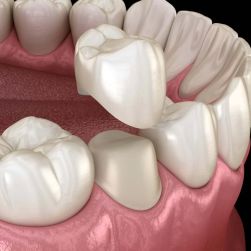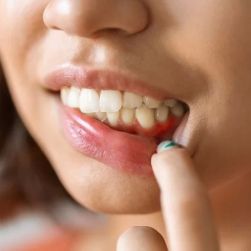How I Handled My Child’s First Cavity Without the Tears
I still remember the moment my daughter came running to me, holding her cheek and saying her tooth hurt. At first, I assumed it was just sensitivity or maybe a popcorn kernel stuck somewhere. But after a few days of on-and-off discomfort and a small dark spot I hadn’t noticed before, we visited our family dentist—and sure enough, it was her first cavity.
As a parent, I felt guilty, nervous, and unsure of what to do next. But going through the experience taught me so much about treating a child’s first cavity with care, patience, and a bit of creativity. Here’s our story and everything I wish I had known sooner.
1. Recognizing the Early Signs of a Cavity
It started with occasional complaints while brushing, and I noticed she avoided chewing on one side of her mouth. Then there was the small brownish spot on a molar that didn’t go away after brushing. These signs can be easy to miss, especially if your child doesn’t always speak up about discomfort. That’s why it’s so important to keep an eye out for the subtle clues:
- Sensitivity to hot or cold foods
- Pain when biting or chewing
- Visible dark spots or holes on teeth
- Bad breath despite good brushing
When in doubt, it’s better to schedule a check-up than to wait for the pain to get worse.
2. Finding the Right Pediatric Dentist
My next step was finding a dentist who specializes in pediatric care. This made a huge difference. We chose a practice recommended by other parents in our community and had great reviews—Dentistry Toothtruth really stood out.
What made the appointment go smoothly wasn’t just the technical skill of the dentist, but how they talked to my daughter. They explained every tool, every sound, and gave her a little mirror so she could see what was happening. By the end of the visit, she felt like a brave superhero and proudly showed off her shiny tooth filling.
3. Preparing Your Child for Their Dental Visit
I made the mistake of saying, “It won’t hurt” too many times—turns out, that only made her more anxious. What helped the most was reading children’s books about visiting the dentist and letting her roleplay the experience with a stuffed animal.
The night before the visit, we packed a small backpack with her favorite blanket, a little toy, and headphones for calming music. Giving her some control made the experience feel more like an adventure than a punishment.
4. Understanding the Treatment Options
The dentist gave us a few options depending on how deep the cavity was. Fortunately, it hadn’t reached the nerve, so a basic composite filling was enough. Here’s what we learned about common treatments for early childhood cavities:
- Fluoride Treatments: Great for very early cavities that haven’t progressed into decay. This was part of our routine after the filling.
- Tooth-Colored Fillings: These are non-metallic and blend naturally with the tooth, which helped my daughter feel less self-conscious.
- Stainless Steel Crowns: Often used for larger cavities in molars where strength is needed. We were fortunate not to need this, but the dentist explained it thoroughly.
The procedure itself was painless thanks to numbing gel and distraction techniques. The dentist also showed us each step on a diagram, which helped reduce both our anxiety levels.
5. Building Better Dental Habits After Treatment
After her cavity was filled, we started a brand-new dental routine together. I didn’t want her to feel punished, so we turned it into something fun. Here’s what worked for us:
- Letting her pick her own toothbrush and toothpaste (she chose bubblegum flavor)
- Using a two-minute timer in the shape of a panda to make brushing a game
- Switching to floss picks made for kids—easier for little hands
- Establishing a reward chart for brushing and flossing twice a day
We also made some diet changes, like cutting back on sugary snacks and offering more water after meals. These small changes made a big difference quickly.
6. Keeping Follow-Up Appointments and Monitoring
We went back to the dentist six months later for a check-up and fluoride treatment. Everything looked great, and my daughter was actually excited to return. Making the dentist a routine part of her life—rather than a place of fear—helped us prevent future issues.
The key was consistency and keeping the tone positive. We even started calling it our “tooth spa day” to make it sound exciting instead of scary.
7. What I’d Tell Other Parents Facing This for the First Time
It’s easy to feel guilty when your child gets their first cavity, but the truth is, it happens to a lot of kids—even when you think you’re doing everything right. The most important thing is how you respond. Stay calm, stay informed, and focus on making the experience as supportive as possible.
Our experience turned into a bonding moment—one filled with learning, growth, and a little sparkle. And if you’re looking for a dental team that truly understands kids and puts both you and your child at ease, the folks at Dentistry Toothtruth made all the difference for us.







